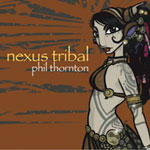 |
 |
 |
 |
 |
 |

|  |
 |
 |
 |
 |
 |
 |
 |
 |








 |
Samhain - track 4 The second part of 'Samhain' was built around a 'drums around the campfire' type recording. The music could have got quite 'dark' at this point but in the end I decided to make the arrangement more 'upbeat' in order to fit in more with the overall mood of celebration. Also using Ben on violin for the first time gave me the opportunity to steer the 'shaman' sound into new territory! The main melody was recorded as a set of harmonies to the violin, then left to play on their own for the first time round - treble, descant and soprano recorders. On the third time through the violin starts first and is soon joined by all the harmonies. The fade at the end lets the keyboard sounds shine through before returning the listener to the ground ready for the winter solstice - wavestation, M1R, VL7, etc.
|
Winter Solstice - track 5 The melody had a slightly 'Celtic' flavour which made for a good starting point when I was working on the rest of the album. Also the rhythm approach helped set the mood and define how far to go with that aspect of the arrangements. The shape of the track was created by cross fading three sections of the original piece using Cubase VST on the Mac.
|
Beltane - track 8 The languid fretless bass parts are an attempt at creating a relaxed centre to the atmosphere of celebration. There is a trance-like quality to the harp interludes which help separate the images. The way the rhythm fades out near the end of the track tries to conjure up the image of sitting round the camp fire at the end of the day as the drumming gradually subsides. While the e-bow over the last chord is a musical reference to the track 'Phoenix' from the album 'Fire Queen' and is meant to represent the embers of the Beltane fire (bonfire).
|
Notes on computer based recording. In the case of track 5, sounds used on the original recording were no longer available (midi info plus DX7 performance) so importing the original multitrack recordings allowed new arrangements to be built up!
|
< Previous : Back to Solstice details : Discography : Next >
|
